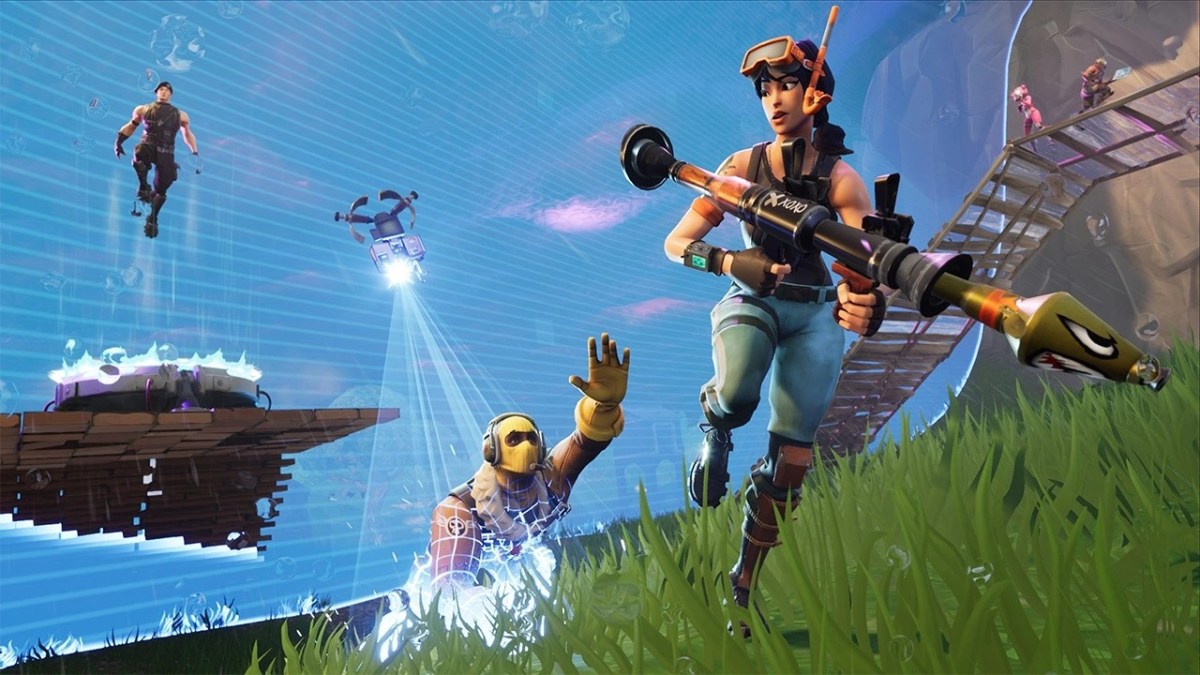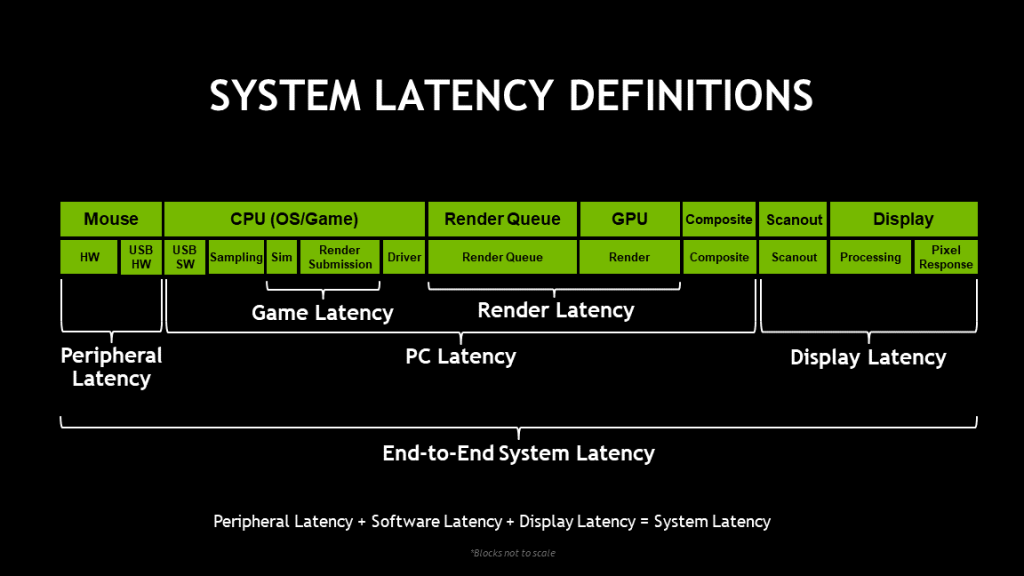How NVIDIA Reflex Offers the Best Way to Play Battle Royale Games
NVIDIA Reflex can give you the edge where it counts, leaving nothing to chance in competitive shooters like Fortnite and Call of Duty: Warzone.

This article is brought to you by NVIDIA.
“Honestly, it helps pretty much any game that requires responsiveness,” says Seth Schneider, Senior Product Manager at NVIDIA. We’re discussing the clever wizardry behind Reflex, the company’s solution to the perpetual problem of local latency which, in competitive shooters, can be a matter of (virtual) life and death.
When you hear the word “latency” you probably think of ping — the number of milliseconds between you and the server in a multiplayer game, which tells you how smooth your connection is. The higher the number, the longer it’s taking data to travel to and from the server, and the worse the game is performing.
But that’s only half the equation: the other is how quickly your input — tapping the spacebar, or clicking the mouse — reaches the game. With Reflex, NVIDIA has optimized this to the nth degree, refining every part of the journey from input to the action taken on screen, and reducing the response time by massive amounts.
In layman’s terms, the click of your mouse will register in-game faster, meaning you may get that headshot in before the enemy does. It essentially means your input matches your reflexes and there’s next-to-no bottleneck.
“I’d say a quote-unquote ‘worst case Reflex integration’ is like a 20 to 25% reduction in latency,” Schneider says. “Really, really good ones that we see are even above 50%, they’ll be 60 to even 65% latency reduction, which is phenomenal.”
It’s hard to overstate what an astonishing technical achievement this is. To put things into perspective, these are all the steps in the process that stand between your off-screen actions being reflected in game:

“We’re trying to ‘just in time’ all the work,” explains Schneider. “We don’t want your inputs to be stalled anywhere in the pipeline before they get to your display. That means no extra time in the CPU, no extra time in the GPU, no extra time in the display.”
Take Fortnite, as an example. Schneider says running on a RTX 3050 at 1440p, you’d expect between 60 and 80fps at “pretty high” detail settings. At that level, you’d also expect latency of around 60 milliseconds. “It feels a little squishy, a little floppy,” he says.
A driver based solution can help cut off 10 milliseconds or so, but with Reflex, you’re looking at potentially halving that again. “We take off the CPU side, which is going to reduce us down to about 30 and maybe even 25 milliseconds.”
The benefits here should be obvious, but even if you’re shrugging and muttering that you’ve never noticed a problem, you should take note, because the higher the input latency, the less consistent it is.
“So while you can compensate to an extent, you can only do so much at higher latency just because you have these 20 millisecond swings that completely throw off your timing,” he explains. “At some point, you’ve got to bring it down to be able to really perform your best.”
That should be music to the ears of aspiring pro esports players, where milliseconds can mean the difference between huge prizes and going home empty handed. In short, Reflex makes pro setups even more professional without getting bogged down in the weeds of software optimization which — spoiler — Schneider says have mixed results anyway.
“There is a lot of misinformation out there,” he says, pointing to mythical registry tweaks and other software hacks which people swear by in certain corners of the internet. “But latency’s complicated so if you reduce it in one spot, it increases it in another because it’s a pipeline. And without having a full view of system latency, you’re kind of optimizing blind.”
NVIDIA, on the other hand, sees all of it. “We’re the perfect people to do this, because we have pieces in every portion of the pipeline, so we can make sure it is the lowest latency possible,” he explains.
Pros who want to see the results of the secret sauce rather than just feeling it can: a compatible monitor and/or mouse will show the latency in real time. But everyone will benefit, whether the stats are reported in real time or not.
Theory and Practice
Reflex technology is already enabled in eight of the top 10 shooters available, including Fortnite, Overwatch, Apex Legends, Destiny 2, Rainbow Six Siege, Valorant, and Call of Duty: Warzone. For the purposes of seeing for myself, I booted up Fortnite on a state-of-the-art gaming laptop supplied by NVIDIA featuring the company’s RTX 3080 mobile chipset, alongside an Intel Core i7 10870H processor, 16GB RAM, and a super-fast 1TB NVMe SSD.
Before running this test, I’d never played Fortnite, so I was fully expecting to be taught a lesson in competitive first-person shooters by people much younger than myself. In other words, I needed every competitive advantage I could get.
I started off with NVIDIA Reflex disabled to give myself a general feel for the difference and it was, it’s fair to say, a pretty underwhelming debut. I did manage a handful of kills by playing Fortnite like it was Hunt: Showdown and sneaking around in fear of my mortality, but it wasn’t exactly getting into the spirit of the colorful world of Battle Royale Island.
I then flicked Reflex on in the settings and instantly won. I won with 13 kills and was the last one standing in No-build Battle Royale mode.
Now I encourage you not to look too long at that picture, because the 23% accuracy rate could certainly be improved and no doubt I was on Fortnite’s nursery slopes. But all the same, NVIDIA Reflex definitely helped.
It helped when someone got the drop on me early on and, out of bullets, I had to take them down with a melee weapon. Or when I found a sniper rifle and was able to time my headshots to perfection from a safe and cowardly distance.
And it helped when it was just me and one other player left standing: in a game of fine margins like Fortnite, every little advantage helps, and it’s no exaggeration to say that the millisecond advantages Reflex gave me could well have swung that final dual in my favor. If my noble opponent had been a split second quicker on the draw, it could have been my head exploding like an overripe watermelon instead of theirs. I then went on to win a second time, albeit with just the 11 kills this time: still, a KDA of 27 is something I will brag about for some time to come.
Flush with victory I turned to Call of Duty: Warzone, which, alas, brought me back down to Earth with a thud. I got a couple of kills where Reflex likely gave me the edge, but it would be an exaggeration to say it went “well.”
That said, I can definitely credit Reflex with an assist in the Gulag where you go after you’ve died for the first time in a match. There, you’re paired off against another downed fighter in a one-on-one fight for a chance to re-join the game, and when I managed to win those, Reflex certainly played its part, allowing me to get my shots out the second I saw my enemy’s face.
While Reflex has been enabled for all GeForce cards from the GTX 900 and up, it works best on the latest RTX 30-series hardware. “The absolute latency is even lower with the higher-end GPUs,” Schneider confirms. “As frame rates increase, the penalty you get from queuing is less,” he explains. In other words, the improvement you get in lower-end cards may be a bigger percentage improvement, but that’s because it’s starting from higher latency levels. The RTX 30 series remains the pro gold standard, both for graphical fidelity and ultra-low latency.
Of course, reduced latency isn’t just for aspiring professionals. “I’ve played a bunch of Elden Ring lately and even though there is a large amount of animation delay in that game, the timings that you need to be able to roll dodge effectively requires lower latency,” Schneider says. “Latency’s important for everything.”
